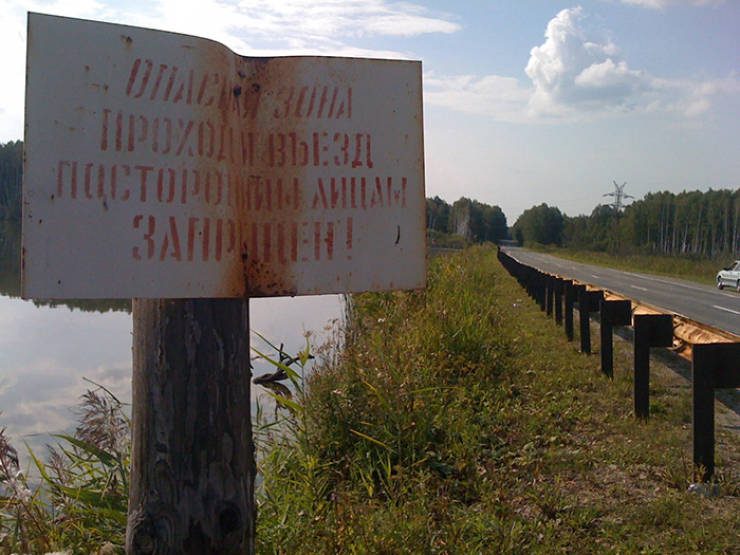The officials swept everything under a rug and people were unaware that they were living in a radioactive area

The Soviets did what they were best at – quietly covered everything up and denied it happened for nearly three decades. After the accident, dumping in the Techa River officially ceased – now the waste material was being dumped in shallow lakes near the plant instead. One particularly contaminated lake – Lake Karachay – is being called the “plutonium lake” or “lake of death” among the locals and is known as the most contaminated place on Earth. In 1967, the lake Karachay dried up spreading radioactive dust across a large area. Despite the heavy contamination and health hazards, more than 80,000 still live in the city of Ozersk next to the Mayak plant.

As if you've seen "any others" back then and are able to compare. Fat propaganda is so fat nowadays.
> Between 1945 and 1957, the Mayak plant dumped and released large amounts of radioactive material [...]
First reactor has been started June 19, 1948. Where did the radioactive material come from before that day?
> To this day, Ozersk is largely contaminated
How contaminated actually? Who did the measurements? When? With what equipment? Boredpanda didn't care to cite any reliable sources. Neither did you.
Why don't you talk about "releasing large amounts of radioactive material" over Hiroshima and Nagasaki? They didn't even get "shops abundant with food".




As if you've seen "any others" back then and are able to compare. Fat propaganda is so fat nowadays.
> Between 1945 and 1957, the Mayak plant dumped and released large amounts of radioactive material [...]
First reactor has been started June 19, 1948. Where did the radioactive material come from before that day?
> To this day, Ozersk is largely contaminated
How contaminated actually? Who did the measurements? When? With what equipment? Boredpanda didn't care to cite any reliable sources. Neither did you.
Why don't you talk about "releasing large amounts of radioactive material" over Hiroshima and Nagasaki? They didn't even get "shops abundant with food".